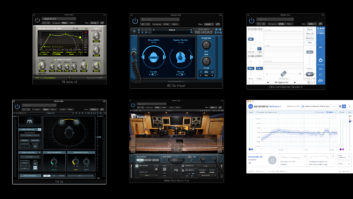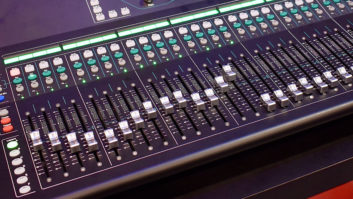I’m currently mixing an 11-song album project with a band that I play with. I’m the only one in the group who has a studio and mixing skills, so I’ve been doing the initial work myself—cleaning up and editing tracks, setting basic levels, adding EQ, compression and ambience effects—basically getting a rough mix together. Then my bandmates attend mix sessions where we move the songs closer to completion. Nobody has final say; we’re co-producing the project.
Early on, these communal sessions were often stressful because some of the other band members asked for adjustments that went counter to my mixing instincts, and in some cases seemed to me to be really over the top. For example, requests to turn up lead elements (both vocal and instrumental) much louder than I would ever have considered, or to mix the drums lower than what most would consider normal.
Read more Mix Blog Studio: Spend Some Time With the Mute Button.
If I were working with clients, rather than bandmates, the situation would be more clear-cut. I could give them my opinions and try to convince them with A/B comparisons when they made odd suggestions, but in the end, if they wanted the vocal ridiculously loud or the kick way too low, I would go along with it.
But in a group-mixing situation, where there is no client and we all have more-or-less equal say, the ground rules are nonexistent. Going in, I had hoped that it would be obvious when something was or wasn’t working, a sort of meritocratic approach to mixing. But especially at the beginning, that was not the case.
After a few tough sessions, I realized that I needed to chill out a little and pick my battles, rather than arguing against everything that went against what I thought was best for the song. Thankfully, the other band members had a corresponding change of attitude, and ever since then, the sessions have been considerably less stressful and much more productive.
The biggest takeaway for me has been that while it has at times been difficult to come to a consensus about particular aspects of a mix, the disagreements and back and forth have often proved fruitful. Combining creative visions can bring an infusion of new ideas. When tempered a bit, some of their out-of-the-box suggestions have worked quite well. It made me realize that it’s easy to get stuck in one’s own vision of what a mix should sound like, and having other voices chiming in can provide a fresh perspective.
Still, I wouldn’t want to mix like this all the time—it’s more time-consuming and stressful than working alone. But if the situation is genuinely collaborative—that is, everyone keeps an open mind to each other’s ideas—the sum of collective creativity can be greater than the parts.







